From buying your first guitar to becoming a guitar expert, guitar terminology is essential at every stage. Buying an essential guitar book for beginners will take you a step towards your dream of learning guitar.
A guitar is not just a box that creates sound. It's a combined act of all the elements that function together to create soothing music.
So, when you are starting out learning guitar, it is advisable to understand each aspect right from day one. Without further ado, let's move ahead with the concept.
Guitar Terminology For Beginners

You must know the terminology to understand your instrument. It's like meeting a stranger and growing a friendship. If we consider it a delicious dish, several elements are combined to bring the best flavor out of it. Which are those elements? Let's learn.
Guitar Terms to Know
1. Parts of the Guitar

The guitar terminology has to start with all the parts of the guitar. Different types of guitars contain a variety of elements.
For example, some parts you find in an acoustic guitar are not a part of electric guitar, or bass guitar.
![All the Parts of Guitar Explained [With Diagram]](https://enthu.com/blog/media/ZPh6ReASD2ezfDmB.jpg)
However, the 3 common elements in all of them are the headstock, neck, and body. Besides that, the other parts include a tuning peg, nut, fret board, fret markers, pick, pickguard, bridge, bridge pins, saddle, and the essentials - strings.
All the parts are the heart of the guitar. We can conclude a melody is a combination of all the guitar parts.
2. String Names and Numbers
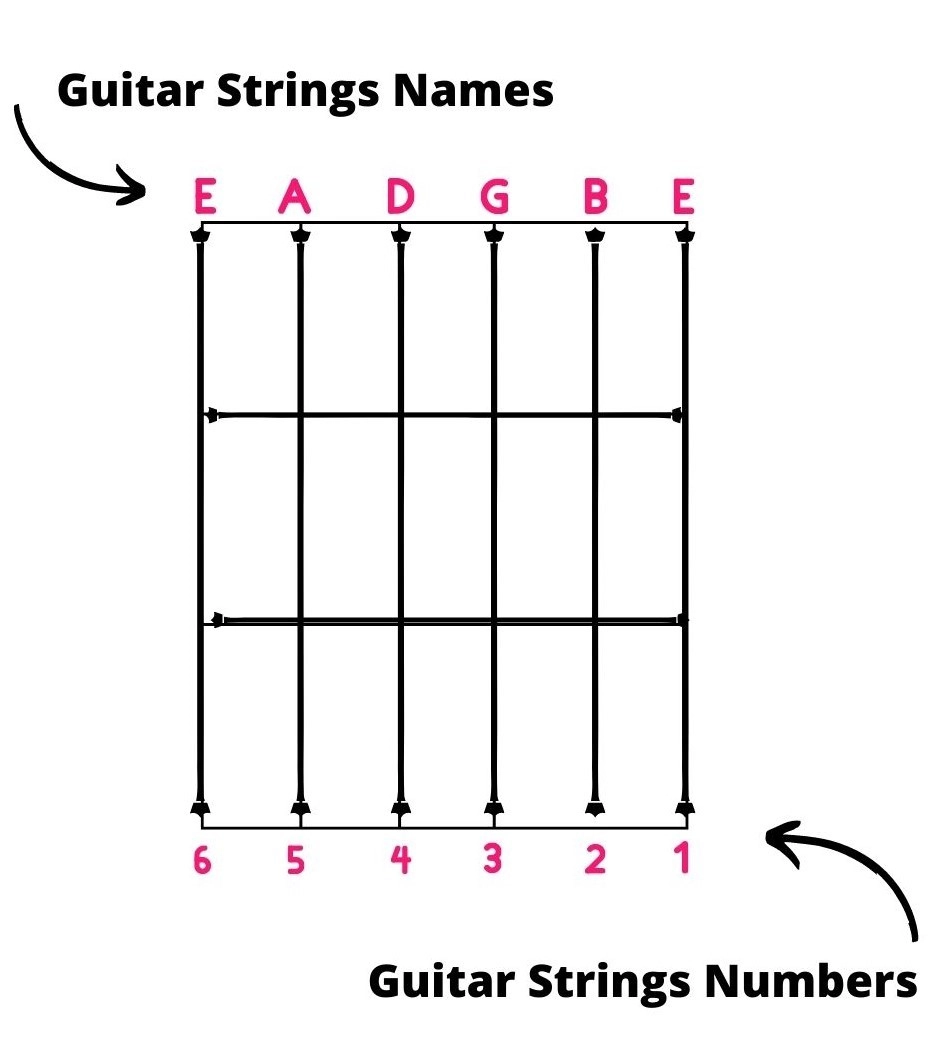
Knowing strings, names, and numbers is the next step after learning about all guitar parts. Strings are an essential part of the guitar. The 6 strings start with a low E string on the right side and end with a high E string on the left. The order is E B G D A E.
The numbering order is also easy to understand. E B G D A E 1 2 3 4 5 6 I have an interesting formula to remember the strings in order. Let's consider all 6 letters as initials to a word. Emma Brought Great Dish At Event. Isn't it easy to remember the strings?
3. Tuning What
If the strings you play are out of tune? Would you like to hear a guitar melody that has no pitch? Here, tuning comes into the picture. You tune the strings to set them on the correct pitch.
It is called standard tuning. You have to tweak the tuning pegs for tuning guitar strings and set the pitch for each string. You can use tuner apps to find the right pitch.
Besides, it would be best if you find out why do guitars go out of tune and work on those factors to maintain proper tuning.
4. Chord When
You play two or more notes together, it forms a chord. A chord is a combination of different notes that go well together. A variety of chords are there based on the tonality of notes. These include:
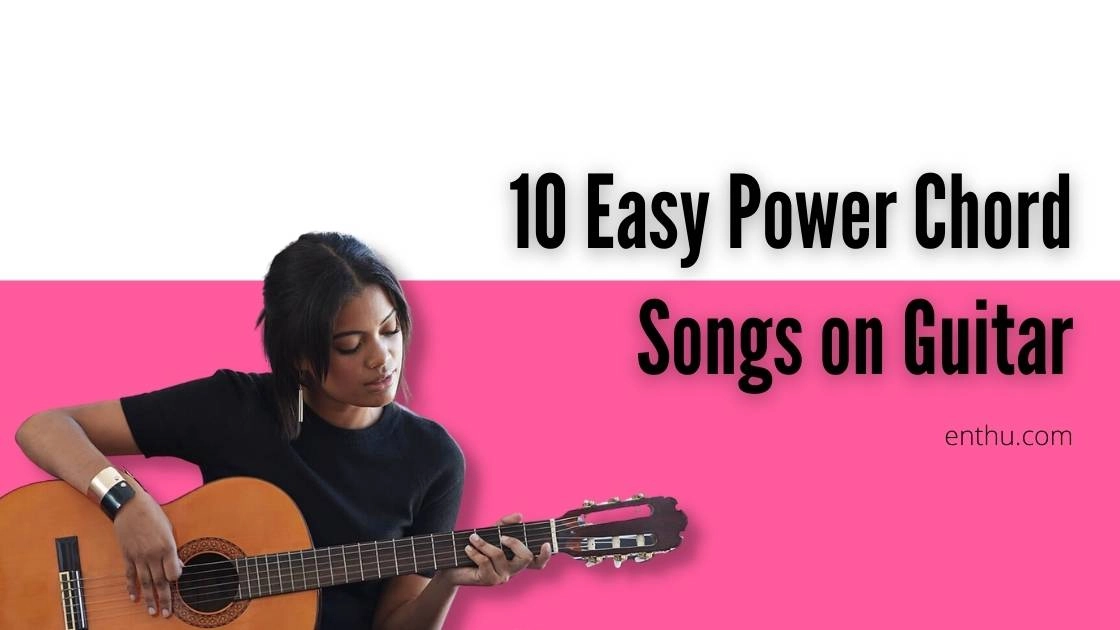
Major chords
Minor chords
Triad chords
Suspended chords
Augmented chords
For example, you want to play Gm on guitar. Try placing your index finger on the last three strings on the third fret, ring finger on the fifth fret, and pinky finger on the fourth string of the fifth fret.
Before you get excited about learning all of them, I suggest starting with some beginner guitar chords. Once you know them, you can go with advanced ones.
5. Chord Diagram
A chord diagram or chord chart is a roadmap to understand chord structure. In particular, beginner guitar players must know how to read chord charts. The chord chart's vertical lines represent strings, and horizontal lines denote frets.
The X tells strings to skip, whereas O tells you to play strings. The numbers denote finger positions. Here is Am chord diagram variation for your reference.

6. Tabs Tab or Tablature
Is a bit complex to understand compared to chord diagrams. Tabs show finger placements. The lines are considered strings, and the numbers are frets.
While practicing scales on tabs, you get to visit several frets. You land on every note. This works as an excellent finger exercise. You also get perfect at playing notes.

7. Strumming In strumming
You strum strings simultaneously, holding a pick or just by the tip of your fingers. Multiple patterns can be created.
Basic Strumming Patterns
Down up, down up
Up down, up down
Down down up, down down up
Down up down up, down down up
Down down up, up down up
You will find several strumming patterns if you explore them.
Strumming Tips
Don't stop strumming the strings even if you cannot hit the stroke properly or missing a couple of strings.
Loosen up your wrist every time you strum.
Follow the right technique of holding a pick.
Try the strumming pattern with a single chord first to get a good grip on it.
Practice strumming along with songs to learn about tempo.
8. Fingerpicking
The beginner enthusiast's favorite technique is fingerpicking. Why? There are a handful of reasons. It looks fantastic, sounds cool, and you slay! Fingerpicking involves plucking the strings only with fingertips rather than a guitar pick or plectrum.
In fingerpicking, you don't use any tool like a pick. Your fingers are the only medium to create sound by plucking the strings. As you play using your fingertips, it can create bumps. So make sure you protect your fingertips.
9. Fingerstyle
While playing fingerstyle guitar, strings are plucked and strummed using fingertips, fingernails, or thumb pick. This is a creative guitar-playing style.
It might seem easy looking at someone playing the same, but you need a different skill set to learn fingerstyle. Practicing finger exercises including thumb exercises, works best. Make sure you take care of the posture as it can impact playing.
As a beginner, are you confused whether Guitar Feedback is good or bad?
10. Open Chord
Open chords are those which have open strings. That means, in an open chord, there are one or more strings on the fret which you don't play. Playing open chords is simple, as you have to skip a few strings and open them. Open chords are beginner-friendly. You don't need to hold all the strings with a finger as you do in barre chords.
11. Barre Chord
While playing a barre chord, you hold all the strings simultaneously on a specific fret using a single finger. The index finger is mainly used to put a bar across strings, and the rest fingers hold other notes. I know it's a bit tricky guitar term for beginners.
I'm not saying it's scary, but it needs a firm grip over the fingers. Don't worry. You develop it with regular practice. A beginner can use a guitar capo to play barre chords, but just to understand how the chord sounds. Have a look at a barre chord example.

12. Capo
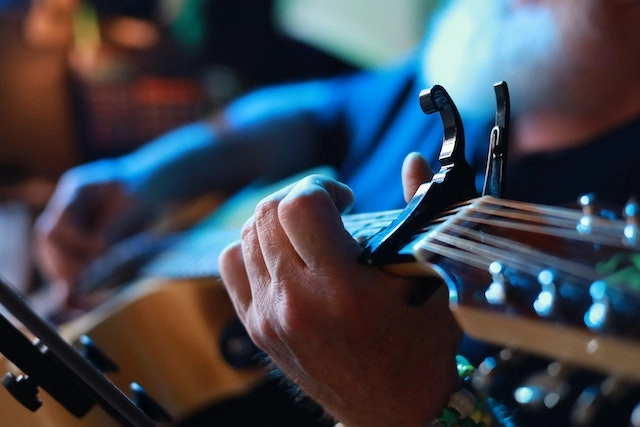
How to use a capo on guitar? It is simple. Clamp the capo on a fret across strings as we do in barre chords with a finger. A capo is used when you want to change the pitch while someone is singing along.
So, to match the tone and scale, a capo is effortlessly used to make playing accessible. This tiny tool is handy, especially for beginners who haven't built dexterity. Try using it, but don't get habitual with it.
Instead, learn barre chords because barre chords without a capo sound more natural rather than clamping a capo. Guitar terminology is all you should know if you want to learn guitar. For beginners, it is even more necessary. These are the fundamental guitar terms to know for a guitarist.
Know More About Your Guitar
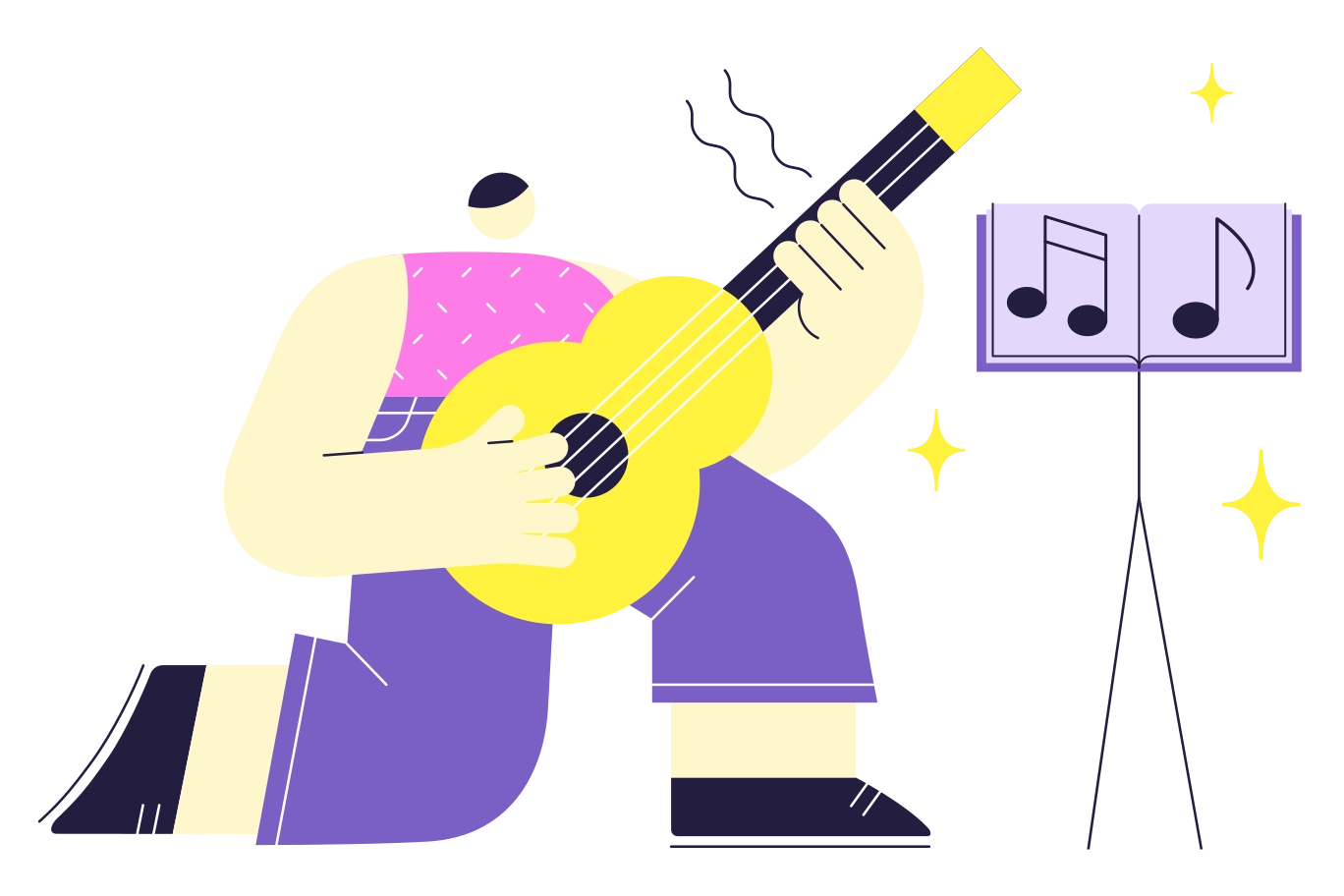

FAQs
1. What should every beginner guitarist know?
The straight answer is the entire guitar terminology. In addition to the above terms, here are a few other factors that are beneficial and a must-know for every guitarist.
2. How to practice guitar chords?
There are a few factors you must consider to practice guitar chords.
Memorize chord shapes
Individual chord practicing
Use fingertips for playing chords
Practice playing the chords with the metronome
Don't stop strumming
3. How Much Time Does it Take to Learn Guitar?
It takes one to two months of regular practice to learn guitar properly. However, it varies from person to person. Because each guitarist has a different approach to grasping a new skill. You see the best results with consistent practice.
4. Can Guitar be Self-Taught?
Yes, you can learn guitar by yourself. Make sure you learn proper techniques right from holding a pick till you master some funky jazz songs or metal music.

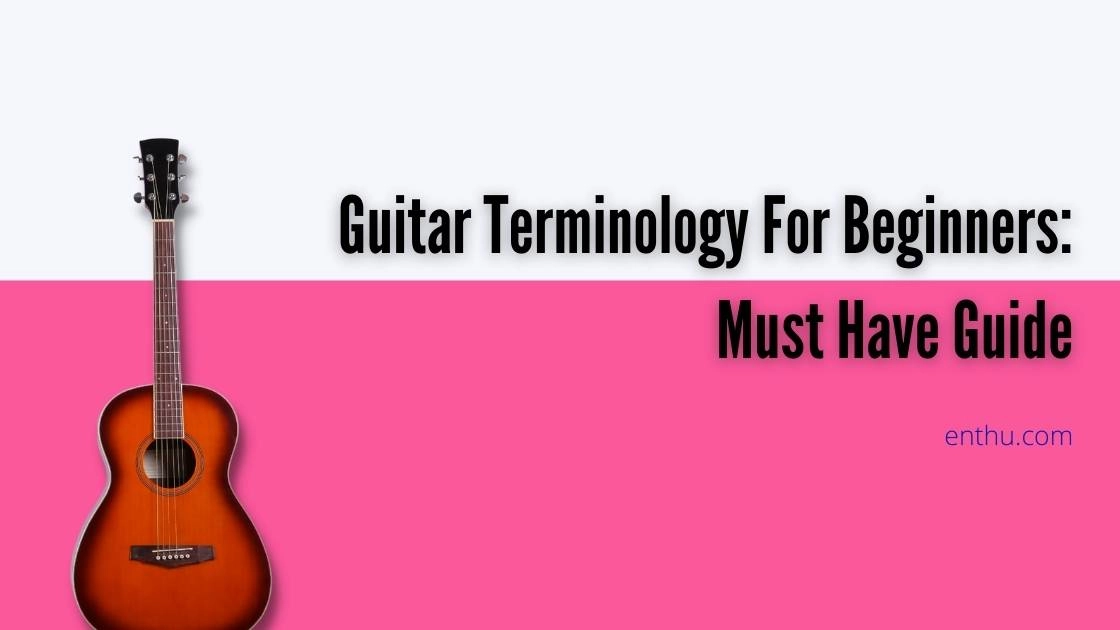
Comments